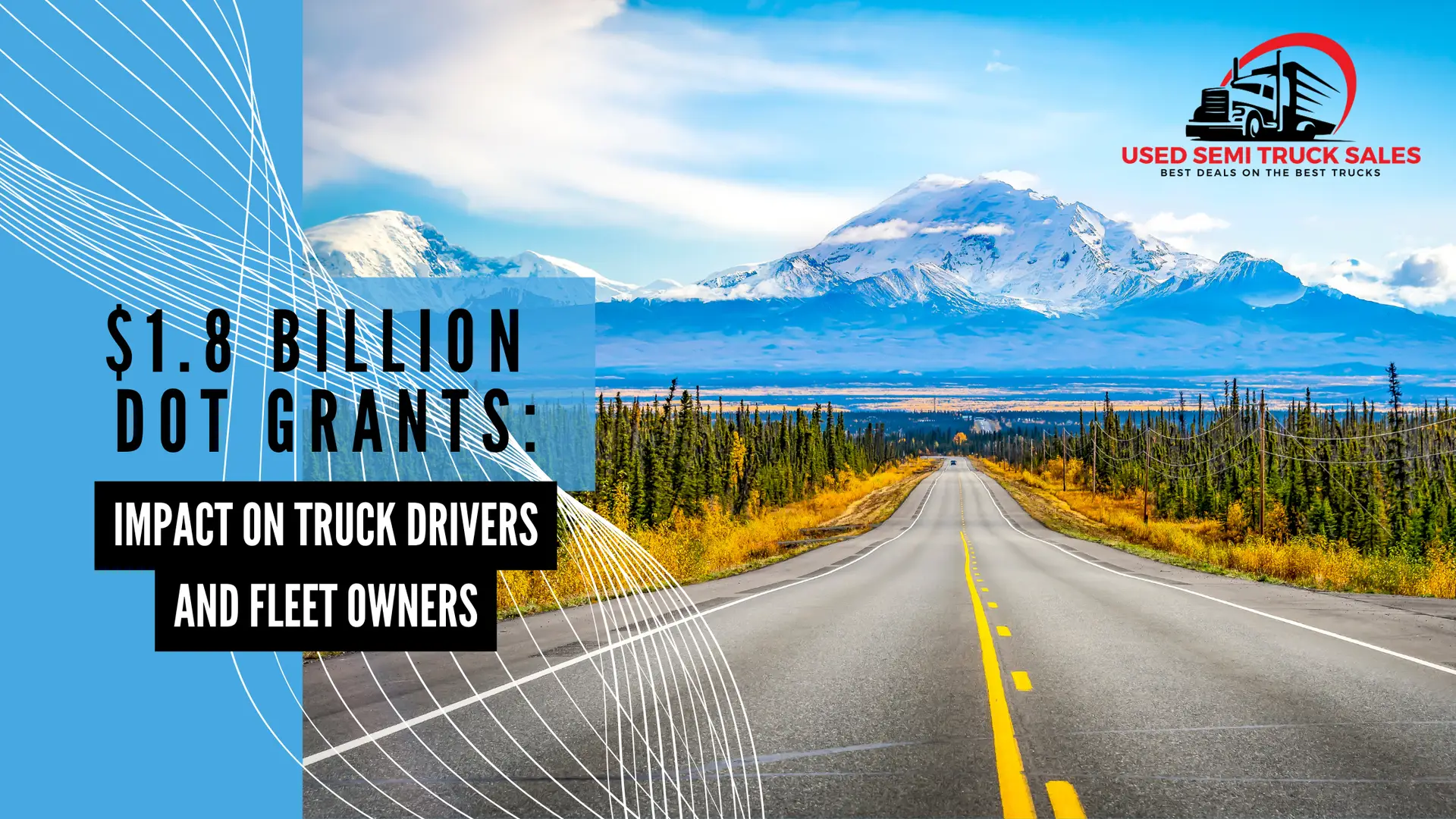The U.S. Department of Transportation (DOT) recently announced a substantial $1.8 billion investment in highway and infrastructure projects across the country. This funding, aimed at improving the nation’s transportation network, has significant implications for the trucking industry, which includes both individual drivers and fleet owners. However, with these improvements come certain challenges that need to be considered.
Key Investments in Trucking-Related Projects
Several projects funded by these grants are set to directly benefit the trucking industry. Here are some highlights:
- Alaska: $25 million will go towards upgrading 45 miles of the Alaska Highway in Fairbanks, addressing issues caused by thawing permafrost and climate change. This will ensure safer and more reliable routes for truck drivers.
- California: Another $25 million will be used to reconstruct a railroad bridge in Santa Ana, creating a new grade-separated underpass. This project aims to alleviate traffic congestion and improve safety, making travel smoother for truckers navigating busy intersections.
- Pennsylvania: In Sharpsburg, $24.9 million will fund the construction of a new bridge over the Conemaugh rail line and additional roadway improvements. This will enhance connectivity and reduce delays, benefiting both local drivers and interstate haulers.
- Arizona: A $23.5 million investment will reroute cross-border truck traffic away from downtown Douglas, implementing Complete Streets solutions to reduce roadway fatalities and serious injuries. This project includes resurfacing roads, improving pedestrian facilities, and enhancing overall traffic circulation.
- Alabama: A $3 million planning grant will study the removal of at-grade rail crossings and recommend new alignments to reduce railway blockages. This will minimize unnecessary idling and improve efficiency for truckers.
What This Means for Truck Drivers and Fleet Owners
Improved Road Conditions: With substantial investments in highway and bridge upgrades, truck drivers can expect smoother, safer journeys. Reduced congestion and better-maintained roads mean fewer delays and lower vehicle maintenance costs.
Enhanced Safety: Projects focusing on safety measures, such as the Complete Streets initiative in Arizona, aim to reduce accidents and improve the overall driving experience. Safer roads lead to fewer accidents and disruptions, benefiting both drivers and fleet operators.
Supply Chain Resilience: By improving key transportation links and reducing bottlenecks, these projects will enhance the efficiency of the supply chain. This is particularly important for fleet owners who rely on timely deliveries to maintain their operations.
Potential Drawbacks
Construction Disruptions: During the construction phase, there will likely be road closures, detours, and traffic congestion. These disruptions can cause significant delays for truck drivers, affecting delivery schedules and increasing fuel consumption due to longer routes. Construction zones often lead to bottlenecks and slower traffic flow, which can be frustrating for drivers and lead to longer transit times.
Increased Costs: Frequent travel through construction zones can lead to more wear and tear on vehicles. Potholes, rough surfaces, and debris can increase maintenance costs and the likelihood of needing repairs. Additionally, detours and longer travel routes during construction can result in higher fuel consumption, increasing operational costs for both individual drivers and fleet owners.
Economic Impact: Businesses near construction sites might experience decreased customer traffic due to road closures and reduced accessibility, potentially leading to financial losses. While construction projects create jobs in the long term, there can be temporary job disruptions for businesses and workers directly affected by the construction activities.
Long-Term Maintenance: Newly constructed infrastructure requires regular maintenance to remain functional. Without consistent funding and upkeep, the improvements may deteriorate over time, negating the initial benefits. Dependence on large federal grants for infrastructure can lead to challenges if future funding is not secured, resulting in incomplete projects or poorly maintained infrastructure.
Looking Ahead
Transportation Secretary Pete Buttigieg emphasized that these grants are part of a broader effort to modernize America’s infrastructure after years of underinvestment. These projects, supported by the Rebuilding American Infrastructure with Sustainability and Equity (RAISE) grants and additional funding from the Bipartisan Infrastructure Law, represent a significant step forward.
For truck drivers and fleet owners, these investments mean better roads, enhanced safety, and more reliable transportation networks. As these projects get underway, the trucking industry can look forward to a more efficient and resilient future.
Stay informed about these developments and how they might affect your routes and operations. Improved infrastructure is on the horizon, promising a brighter and more efficient future for everyone on the road.




Leave a Reply